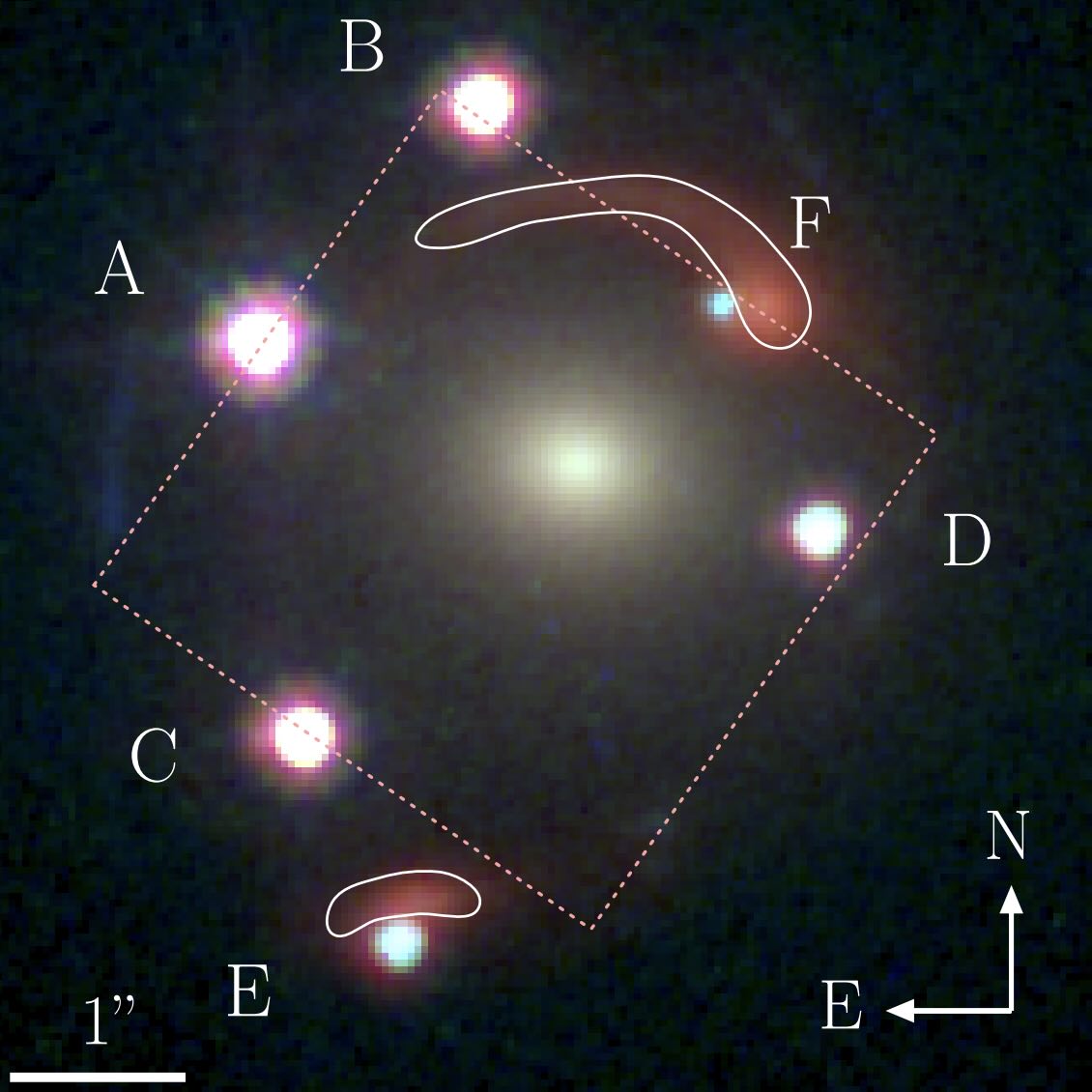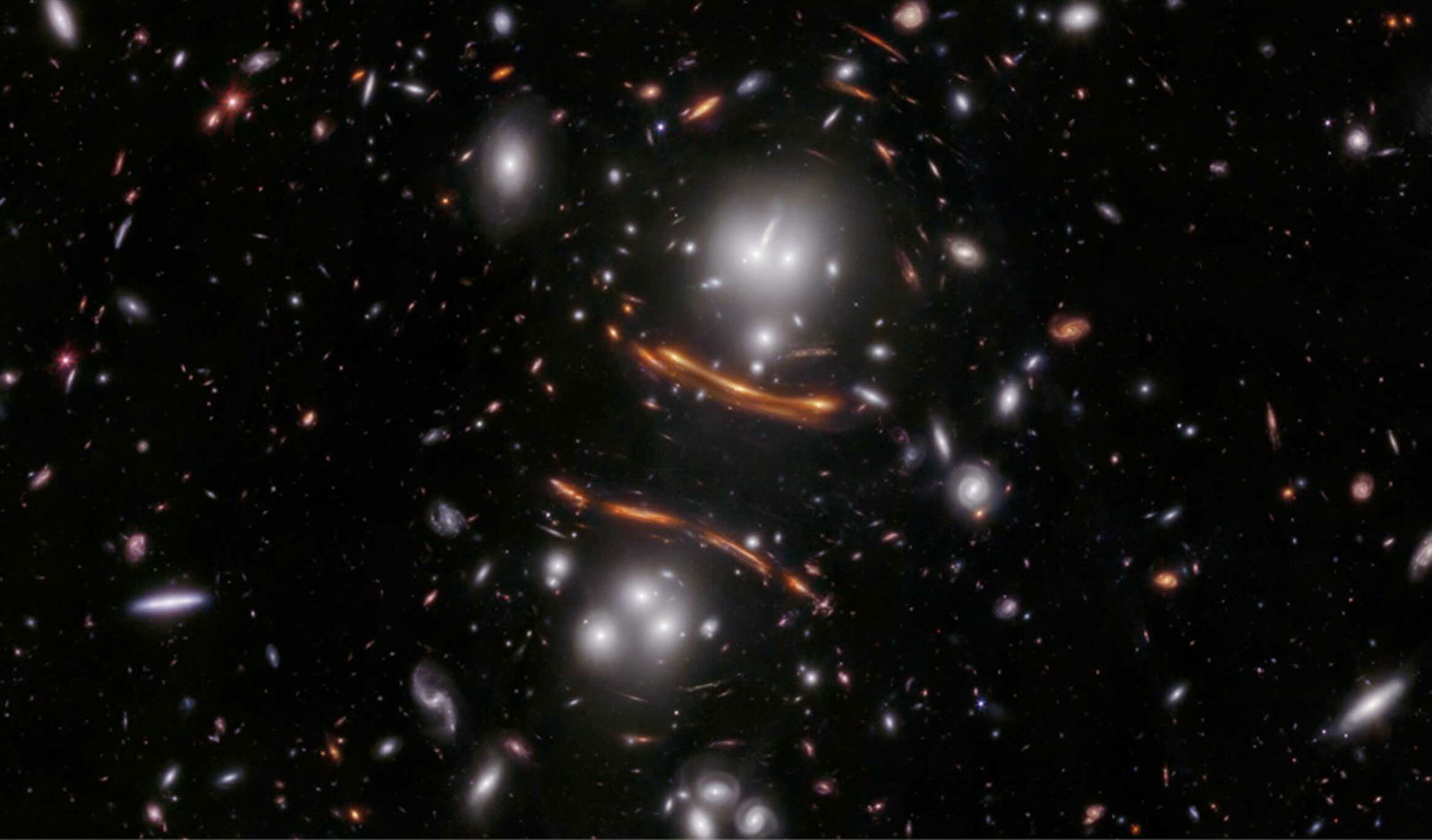The discovery of the first known double gravitational lens has been made with help from observations by NASA’s James Webb Space Telescope, revealing unique zigzagging streaks of cosmic illumination in new imagery unlike any previously seen.
The “compound” or double gravitational lens is the result of a pair of massive galaxies, each located billions of lights years from Earth and positioned in-line so that the influence of their gravity is combined.
The resulting warpage of light from a large, luminous quasar behind them produces an eerie, zigzagging illumination, as revealed in the new Webb images.
Discovering a Double Gravitational Lens
The discovery of this very unique cosmic feature is not entirely unprecedented. Astronomers are already aware of close to 1000 cases where the gravity of extremely large space objects, including galaxies or entire clusters of them, can bend the light produced by objects behind them, very much like a lens made from curved glass can concentrate light rays.
These gravitational lenses are known to produce some striking cosmic features, which include what astronomers call Einstein rings, and even more ghostly features known as Einstein crosses. In both cases, these unusual features are produced when a distant source of cosmic illumination is warped around a massive concentration of gravity in front of it, generating either a halo-like effect, or even multiple distorted images of the same distant celestial object.
While similar to these known phenomena, the researchers behind the recent discovery have given their unique celestial feature an all-new Einstein-inspired designation.
“We report the discovery of the first example of an Einstein zig-zag lens,” write Frédéric Dux of the Swiss Federal Institute of Technology Lausanne and his coauthors of a new paper describing the discovery.


Described by the team as “an extremely rare lensing configuration”—one so rare that it is currently the only such lensing instance known to exist—the unique appearance of this system, J1721+8842, was revealed in six images recently obtained by Webb.
In the images (as seen above), light from a quasar further in the distance is deflected in opposite directions while passing each of the lenses on different sides. The result, the research team behind the discovery says, is that the distinct optical paths of the light produced by this quasar forms what resemble zigzagging streaks of amber light, which occur in between the pair of deflecting sources of gravity.
The team reports that J1721+8842, which they say was “previously thought to be a lensed dual quasar, is in fact a compound lens with the more distant lens galaxy also being distorted as an arc by the foreground galaxy.”
Evidence of an Unusual Lensing Scenario
According to the team’s findings, evidence for the discovery includes several features observed in the new imagery, which include near identical regions of light curvature that occur in all six of the lensed quasar images obtained through monitoring with the Nordic Optical Telescope in Spain’s Canary Islands.
Additional evidence of deflection occurring at a redshift of z2=1.885 were obtained using the James Webb Space Telescope’s NIRSpec instrument. Based on the observations, the research team was able to produce a multi-plane lens model, which allowed them to reproduce imagery positions represented in their combined observations.
“This unique configuration offers the opportunity to combine two major lensing cosmological probes,” the team writes in their new paper, comprising time-delay cosmography and dual source-plane lensing. Each were achieved because J1721+8842 offers a unique glimpse at multiple lensed sources that form two separate, different sized lensing artifacts, or what the team calls “Einstein radii,” one of which includes a variable quasar.
Constraining the Hubble Constant
Based on their findings, the team also says they anticipate their observations will align with new “tight constraints on the Hubble constant,” allowing researchers to infer potentially significant insights into the nature of dark energy.
Given that their observations provide six sets of different light paths associated with this unique double gravitational lens, Lux and the team may be uniquely positioned to make such calculations, which could finally help to resolve ongoing dispute among astrophysicists involving what is known as the Hubble tension, which involves clashing measurements of the expansion rate of the universe, when compared with those anticipated by astronomers.
Specifically, the unique conditions provided here, involving a distant quasar and a separate red galaxy imaged through lensing at two different distances, will offer a chance for calculations of yet another cosmological marker, which ultimately may help researchers unravel clues about the current discrepancy between astronomical measurements of our expanding universe.
That won’t necessarily happen very quickly, however. Dux and his colleagues say they will likely require several more months to make such measurements based on the imagery they have obtained of J1721+8842.
Depending on the outcome of those measurements, the team’s findings may end up being more than worth the wait, however. In fact, could even help to resolve one of cosmology’s greatest standing mysteries.
The team’s paper, “J1721+8842: The first Einstein zig-zag lens,” appeared recently on the preprint server arxiv.org, and can be read online.
Micah Hanks is the Editor-in-Chief and Co-Founder of The Debrief. He can be reached by email at micah@thedebrief.org. Follow his work at micahhanks.com and on X: @MicahHanks.

